Atsinna
Atsinna was a pueblo built in a defensive position atop Inscription Rock at what is now El Morro National Monument. The pueblo was only occupied for about 75 years, from about 1275 to about 1350 CE. That time period began with a large influx of migrants coming south from the Four Corners/Mesa Verde area. Then the drought lifted and the area got wetter. It was a time of expansion for the Zuni people and they moved eastward out of their ages-long homeland along the Zuni River. Within a couple decades they built a dozen large and small pueblos along the arc of the Zuni Mountains. Atsinna was a larger one of those pueblos.

The ancient pueblo of Atsinna
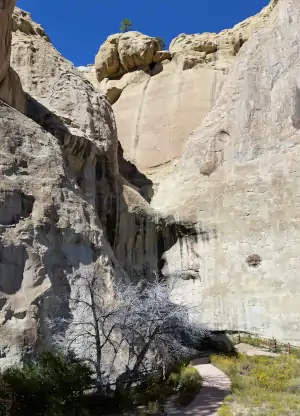
Today, there is a paved 1/2 mile trail leading from the parking area to the pool of water at the foot of the cliff. If you have more time to explore, the 2-mile trail (includes the journey to the pool and past the inscriptions) to the top of the sandstone bluffs (250 feet of elevation gain) is well worth the hike for the views alone, never mind the chance to visit the ruins of Atsinna. While you're climbing the trail, keep in mind that for 75 years, the ancients sometimes carried water up this hill to Atsinna. They made pottery to carry and store the water. They also stored their corn and beans in pottery.
After about 75 years of occupation, the weather pattern started to dry again and the Zuni Mountain pueblos were abandoned. Most of the people returned to the west, to found several pueblos in the valley of the Zuni River. The abandonment of Atsinna also coincides pretty closely with the beginning of Pottery Mound to the east.
In one of the kivas excavated at Atsinna a polychrome geometric wall mural was found. That mural was dated to have been painted between 1275 and 1300 CE, before the founding of Pottery Mound. Most kivas found with wall murals have murals that depict geometric designs. At Pottery Mound that changed.
The findings of the archaeologists support Zuni claims that Atsinna and its immediate neighbors were outlying villages of their people back in the day. There was a short-lived migration from Zuni to Acoma and then to Pottery Mound between 1395 and 1415. Then Pottery Mound was abandoned, the out-migration beginning around 1475 and by 1500, everyone had gone back to wherever their families had come from.
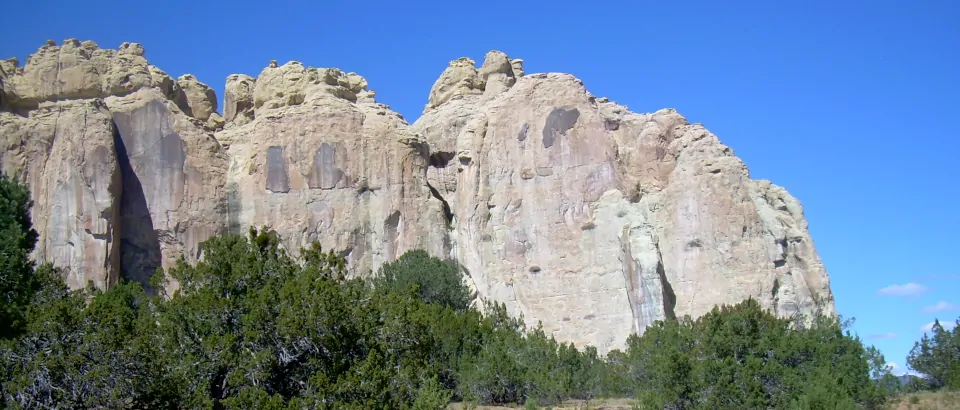
Looking up at Inscription Rock, Atsinna is to the left at the top
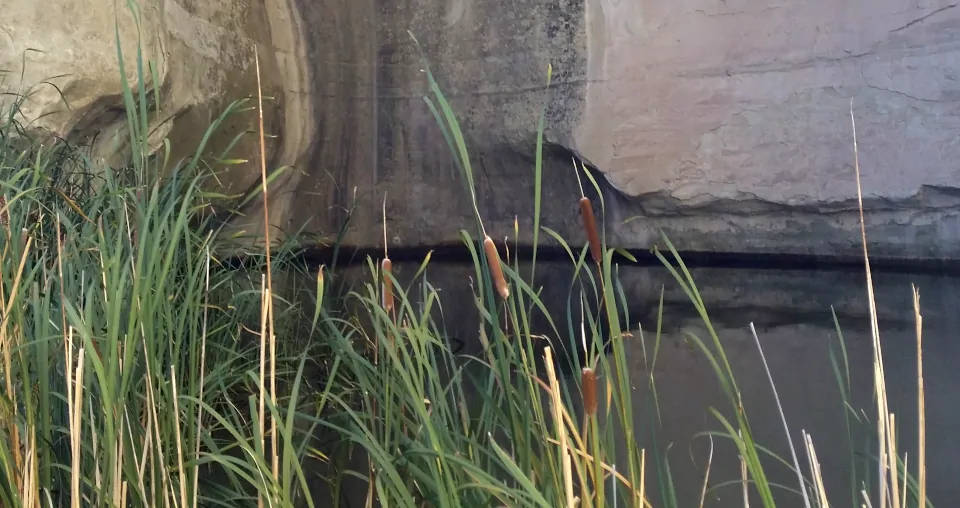
Pool of water at the foot of Inspiration Rock
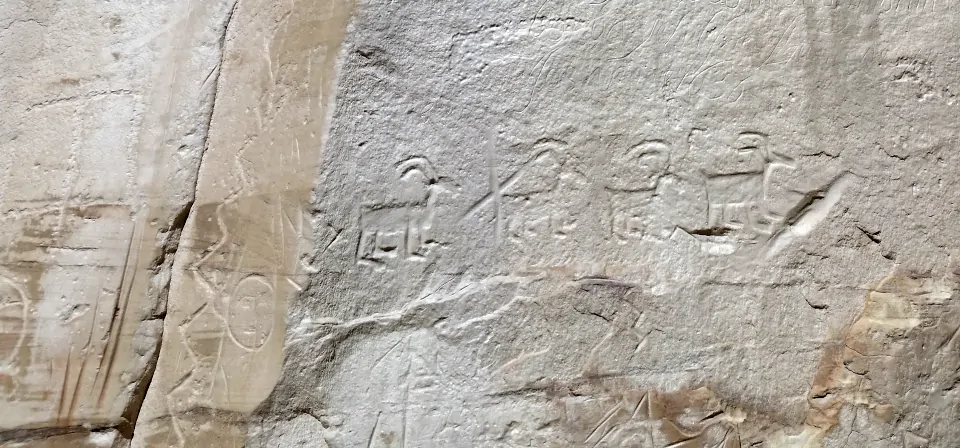
Hundreds of years of graffiti from Ancestral Puebloans and early Spanish and American explorers
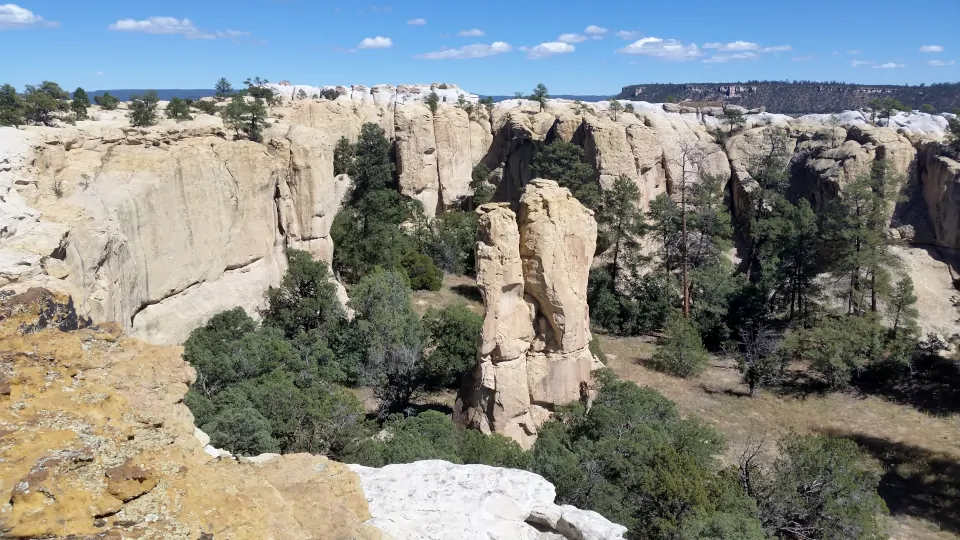
The box canyon behind Inscription Rock
Sites of the Ancients and approximate dates of occupation:
Atsinna : 1275-1350
Awat'ovi : 1200-1701
Aztec : 1100-1275
Bandelier : 1200-1500
Betatakin : 1275-1300
Casa Malpais : 1260-1420
Chaco Canyon : 850-1145
Fourmile Ranch : 1276-1450
Giusewa : 1560-1680
Hawikuh : 1400-1680
Homol'ovi : 1100-1400
Hovenweep : 50-1350
Jeddito : 800-1700
Kawaika'a : 1375-1580
Kuaua : 325-1580
Mesa Verde : 600-1275
Montezuma Castle : 1200-1400
Payupki : 1680-1745
Poshuouingeh : 1375-1500
Pottery Mound : 1320-1550
Puyé : 1200-1580
Snaketown : 300 BCE-1050
Tonto Basin : 700-1450
Tuzigoot : 1125-1400
Wupatki/Wukoki : 500-1225
Wupatupqa : 1100-1250
Yucca House : 1100-1275